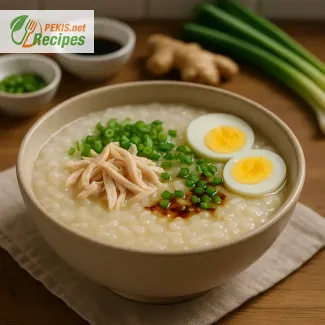
Mastering the Art of Microwave Poached Eggs at Home
Discover the fastest method for perfect poached eggs without boiling water
If you love poached eggs but dread the hassle of simmering water, swirling vinegar, and messy results, there’s a simpler solution: the microwave. This method is ideal for busy mornings or anyone craving a perfectly cooked egg with a runny yolk and tender whites—without the time and cleanup traditional techniques require. Cooking a poached egg in the microwave has become a popular kitchen shortcut, offering a foolproof approach even for beginners.
A classic poached egg is known for its delicate texture and elegant appearance, but the stovetop process often intimidates home cooks. Precise timing, water temperature, and swirling technique all influence the final result. That’s where the microwave method shines. It removes all the guesswork, delivering consistently beautiful eggs in under two minutes. With the right container, a bit of water, and an egg, anyone can recreate the brunch favorite with ease.
This technique is not only quick but also remarkably effective. It works well for preparing a single serving, making it perfect for a solo breakfast, a light lunch on toast, or even as a protein boost on a salad. It’s also an excellent solution for those cooking in dorm rooms, small apartments, or office kitchens where stovetops may not be available. Microwave poached eggs bring gourmet results into even the most compact kitchens.
Why microwave poached eggs are gaining popularity
With modern lifestyles becoming increasingly fast-paced, the demand for quick breakfast recipes is on the rise. The microwave, often underused in traditional cooking, offers the perfect balance between speed and efficiency. As more people seek healthy and convenient meals, poaching eggs in the microwave provides a smart alternative to frying or scrambling.
The method is not only convenient but also health-conscious. Since it requires no added fat and uses only water and an egg, the result is light and nutritious. Unlike fried eggs that need oil or butter, poached eggs retain their richness without added calories. Plus, when made in the microwave, cleanup is minimal—no pots, no pans, no stovetop splatter.
More importantly, the quality of the poached egg is surprisingly high. When done correctly, the whites set gently around the yolk, forming that familiar silky cushion with a molten center. The microwave technique allows you to fine-tune the cooking time, creating firmer or softer eggs depending on your preference. It’s this level of control and simplicity that continues to win over home cooks and busy professionals alike.
Common mistakes when poaching eggs in the microwave
While the process is simple, a few common errors can affect the final result. One of the most frequent is skipping the use of a bowl or mug with a wide base—essential for allowing the egg to cook evenly. Another issue is not piercing the egg yolk before microwaving, which can result in unexpected explosions due to steam buildup.
Adding a dash of white vinegar to the water can help the egg white coagulate faster, although it’s not always necessary. The amount of water and the power level of the microwave also play a significant role. Too little water or too high heat can cause overcooking, leading to rubbery whites and a hardened yolk. Trial and error may be part of the learning curve, but once mastered, the method becomes second nature.
Versatile ways to serve microwave poached eggs
One of the best things about poached eggs is their versatility. They are a staple in many breakfast dishes and can elevate simple meals with their rich texture and savory appeal. Serve them over avocado toast, layer on an English muffin with ham for a quick version of Eggs Benedict, or simply top a grain bowl or salad for a nutritious twist.
They also pair beautifully with roasted vegetables, smoked salmon, or sautéed spinach. A touch of sea salt, cracked pepper, and a sprinkle of fresh herbs like chives or parsley enhance both flavor and presentation. Because of their soft yolk, poached eggs also act as a natural sauce, adding creaminess to everything they touch.
Whether you’re preparing a weekday breakfast or a light dinner, having this technique in your culinary toolkit opens the door to fast, elegant meals at any time of day. It’s also ideal for meal-preppers who want a protein-rich option ready in seconds without sacrificing taste or texture.
Why this method is perfect for beginners and busy lifestyles
Even those new to cooking will find success with this method. It eliminates many of the variables that make traditional poaching intimidating. With just a microwave-safe dish, some water, and an egg, the steps are simple enough for anyone to follow. There’s no need for special equipment or techniques, and results are remarkably consistent.
The microwave approach is also a game-changer for those balancing work, parenting, or study. It fits seamlessly into routines where every minute counts. Being able to make a perfect poached egg in under two minutes without turning on the stove makes this a recipe worth repeating. It’s also easy to adjust based on egg size or yolk firmness preference, making it adaptable for every taste.
This method transforms what was once a “restaurant-only” dish into something accessible, repeatable, and surprisingly satisfying. With minimal ingredients and nearly no cleanup, it’s no wonder that so many people are embracing microwave poached eggs as part of their daily routine.
- Pour 120 ml (½ cup) of water into a microwave-safe mug or small bowl with a wide base. The container should be deep enough so the egg is fully submerged.
- Add 5 ml (1 tsp) of white vinegar to the water. This helps the egg white to set more quickly and evenly.
- Carefully crack 1 large egg into a small ramekin or cup, making sure the yolk remains intact.
- Gently slide the egg from the ramekin into the water in the bowl, ensuring it stays centered and doesn't touch the sides.
- Use a toothpick or the tip of a knife to gently pierce the yolk once. This is essential to prevent the egg from bursting in the microwave.
- Cover the bowl with a microwave-safe plate or saucer.
- Microwave on medium power (about 700–800W) for 30 seconds.
- Check the egg: if the white is still translucent, continue microwaving in 10-second intervals until the white is just set and the yolk remains runny. Total cook time is usually 40–50 seconds, depending on your microwave.
- Carefully remove the bowl from the microwave. Use a slotted spoon to lift the poached egg from the water and drain it on a paper towel.
- Season with 1 g (¼ tsp) of salt, or to taste, and serve immediately.
Elevating Your Microwave Poached Egg for Better Taste and Texture
Expert techniques and creative variations for next-level results
While the microwave poached egg method is widely appreciated for its speed and simplicity, small changes in technique and ingredients can elevate the dish from convenient to exceptional. By fine-tuning the process, avoiding common mistakes, and experimenting with complementary flavors, it’s possible to transform this quick-cook staple into a refined culinary element suited for any meal.
How changing water or acidity can improve the egg’s structure
The quality of the poaching liquid plays a key role in the texture of the egg white. While plain water works, adding white vinegar (around 1 teaspoon) helps the proteins coagulate faster, resulting in a neater shape and firmer exterior. For a more delicate flavor, try apple cider vinegar, which still promotes cohesion but adds a subtle fruitiness. If you prefer to skip vinegar entirely, ensure your water is hot enough before inserting the egg, as cooler water results in a loose, uneven set.
A common enhancement involves adding a pinch of salt to the water. Though typically added after poaching, salting the water can subtly influence the seasoning profile and improve white cohesion when paired with vinegar. However, over-salting can toughen the egg white, so moderation is key.
Flavor infusions: herbs, spices, and broths
Infusing the poaching liquid is an excellent way to introduce depth of flavor. A sprig of fresh thyme, a bay leaf, or a pinch of smoked paprika can subtly aromatize the egg without overpowering it. For a more dramatic shift, poach the egg in vegetable broth instead of plain water. This adds umami notes that pair well with savory dishes like grain bowls or sautéed greens.
Another simple enhancement is adding a drop of truffle oil or sesame oil to the poached egg just after cooking. These oils don’t mix well with water, so they should only be used post-poaching. Their intense flavor can elevate the dish from minimalist to gourmet with a single drop.
Ingredient pairings that boost nutrition and satisfaction
While the egg itself is a complete protein, its role as a meal can be expanded with intentional pairings. Serve your poached egg over whole grain toast, such as rye or seeded sourdough, to introduce fiber and texture. Adding sautéed spinach or steamed asparagus contributes iron and antioxidants, while avocado slices deliver healthy fats that balance the egg’s natural richness.
For a hearty, energizing breakfast, top your egg with grated Parmesan, crushed red pepper flakes, and a spoonful of Greek yogurt mixed with lemon zest. The contrast of creamy, tangy, and savory brings a complex flavor profile without complicating the recipe.
Common mistakes and how to avoid them
The most frequent error in microwave poaching is overcooking. Unlike boiling water where visual cues are easier to observe, microwave timing must be precise. Overcooking leads to rubbery whites and a hard yolk, which defeats the appeal of a poached egg. To avoid this, always cook in short intervals—30 seconds followed by 10-second bursts until the desired doneness is achieved.
Another overlooked detail is piercing the yolk. This step is critical to prevent internal pressure buildup that can cause the egg to explode in the microwave. A gentle prick with a toothpick or tip of a knife allows steam to escape safely.
Using the wrong container can also ruin the experience. Narrow mugs prevent the egg from forming a classic oval shape and lead to uneven cooking. Opt for a wide, shallow bowl that gives the egg space to spread and cook uniformly.
Health-focused alternatives to enhance the dish
For those aiming to reduce cholesterol or follow plant-based diets, consider egg substitutes such as tofu-based mixtures or liquid vegan egg replacements. While they won't deliver an identical poached structure, they can be shaped in silicone molds and microwaved for a similar presentation.
If cholesterol is a concern but eggs are still part of the diet, egg whites alone can be poached using the same method. The result is lighter in both taste and fat content, though missing the creamy yolk center. A dash of turmeric or nutritional yeast can add color and flavor to compensate.
To reduce sodium, skip salting the water or the finished egg and rely on natural flavor enhancers like chives, roasted garlic paste, or a dusting of paprika. This maintains taste while keeping sodium intake minimal.
Why homemade poached eggs are superior to store-bought options
Though pre-poached eggs exist in some supermarket ranges, they often suffer from rubbery texture, lack of freshness, and preservative flavor. A homemade poached egg is fresher, healthier, and far more customizable. You control the exact doneness, salt content, and presentation. The result is not only more nutritious but also more enjoyable to eat.
Cooking eggs at home also ensures the quality of the egg itself. Opting for organic or free-range eggs leads to richer yolks and better nutritional content, with higher levels of omega-3 fatty acids and vitamins like D and B12.
Creative ways to serve your poached egg
Go beyond the standard toast pairing and explore international variations. In Japanese cuisine, a poached egg served over rice with soy sauce and scallions becomes a savory breakfast bowl. In Middle Eastern styles, a poached egg on hummus and pita creates a protein-packed meal. Or try topping a spicy lentil stew with a soft egg for Indian-inspired comfort food.
Even classic dishes can be refreshed: replace the hollandaise in eggs Benedict with mashed avocado and a drizzle of tahini for a plant-forward twist. Add roasted red peppers or sun-dried tomatoes for bursts of umami, and finish with microgreens or sprouts for a modern, photogenic finish.
By embracing these small yet meaningful adjustments, the humble microwave poached egg becomes not just a fast breakfast—but a canvas for creativity, nutrition, and flavor.
Allergens present in the recipe:
- Eggs
Gluten:
- Gluten-free recipe
Substitution tips to eliminate allergens and gluten:
- If allergic to eggs, this recipe cannot be replicated directly. Consider a vegan poached egg substitute made with silken tofu and black salt for flavor.
Vitamins and minerals per serving (approximate):
- Vitamin A: 270 IU – Supports eye health and immune function
- Vitamin D: 41 IU – Aids calcium absorption and bone strength
- Vitamin B12: 0.6 µg – Important for nerve health and red blood cell production
- Iron: 0.8 mg – Supports oxygen transport in blood
- Calcium: 28 mg – Contributes to healthy bones and teeth
- Selenium: 15.4 µg – Protects cells from oxidative damage
Antioxidants per serving (approximate):
- Lutein + Zeaxanthin: 252 µg – Promote healthy vision and protect against macular degeneration
- Selenium (as antioxidant): 15.4 µg – Supports cellular protection and immune defense





